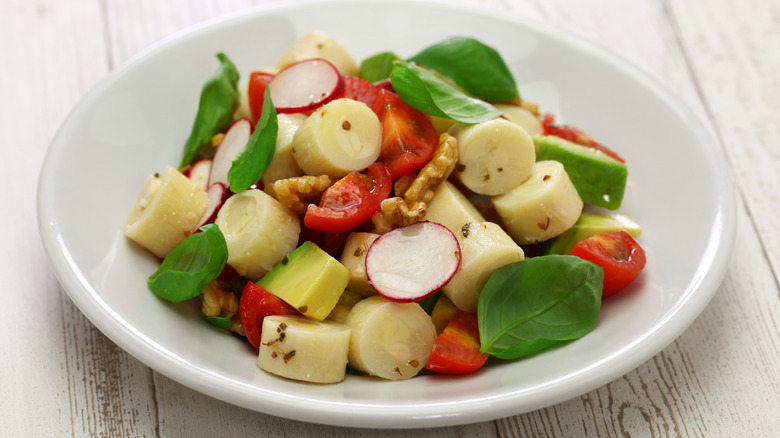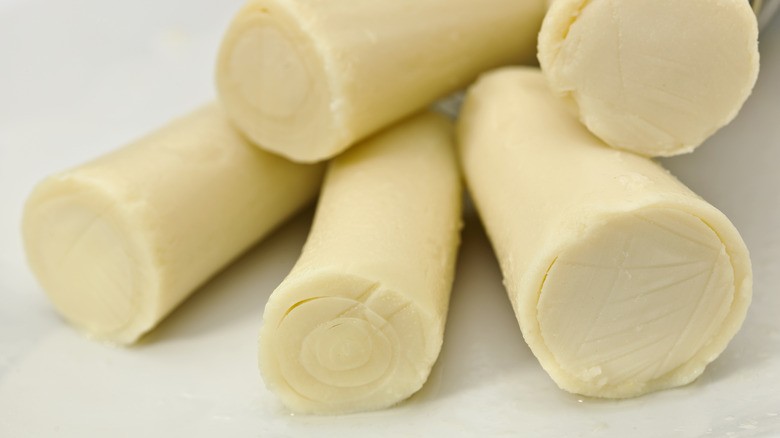Why You Need To Rinse Hearts Of Palm Before Cooking Them
Hot cooking tip: rinse your canned or tinned hearts of palm thoroughly before you cook them. The reason to do this is the same as for any other food that you want to get a good crust on as removing excess liquid will help you brown the surface. Also, rinsing excess brine off will help you avoid an overly salty flavor on your hearts of palm. That way, you can add seasoning as desired.
Fresh hearts of palm are a slightly different story — there's no brine, so there's no need to rinse them. However, they are less common to find in the grocery store because they go bad faster than canned. But whether your hearts of palm are canned or fresh, make sure they are completely dry before you begin cooking to get a great sear. Speaking of which, here are 17 tips for getting the perfect sear on your steak. Bonus: try serving grilled hearts of palm alongside your perfectly seared and seasoned steak.
The uses and impact of cooking with hearts of palm
The crunchy vegetable is more versatile than just being a salad topping. Did you know that hearts of palm are a great vegetarian alternative to sardines? The heartiness of hearts of palm perfectly imitates the texture of sardines, while the salty flavor from the brine imitates the oceanic flavor you'll get from the tinned fish. There are plenty of other ways to use the vegetable, too, from soups to tacos to ceviche.
While using the plant, be aware of how it affects the ecosystem and environment. There are some environmental reasons why hearts of palm are controversial. Harvesting the hearts of palm can kill the entire plant. Additionally, high demand of hearts of palm has led to over-harvesting of the crop, taking it away from communities who have historically relied upon it as a food source. However it is specifically prepared, consumers are urged to check hearts of palm labels to make sure they are harvested sustainably.

